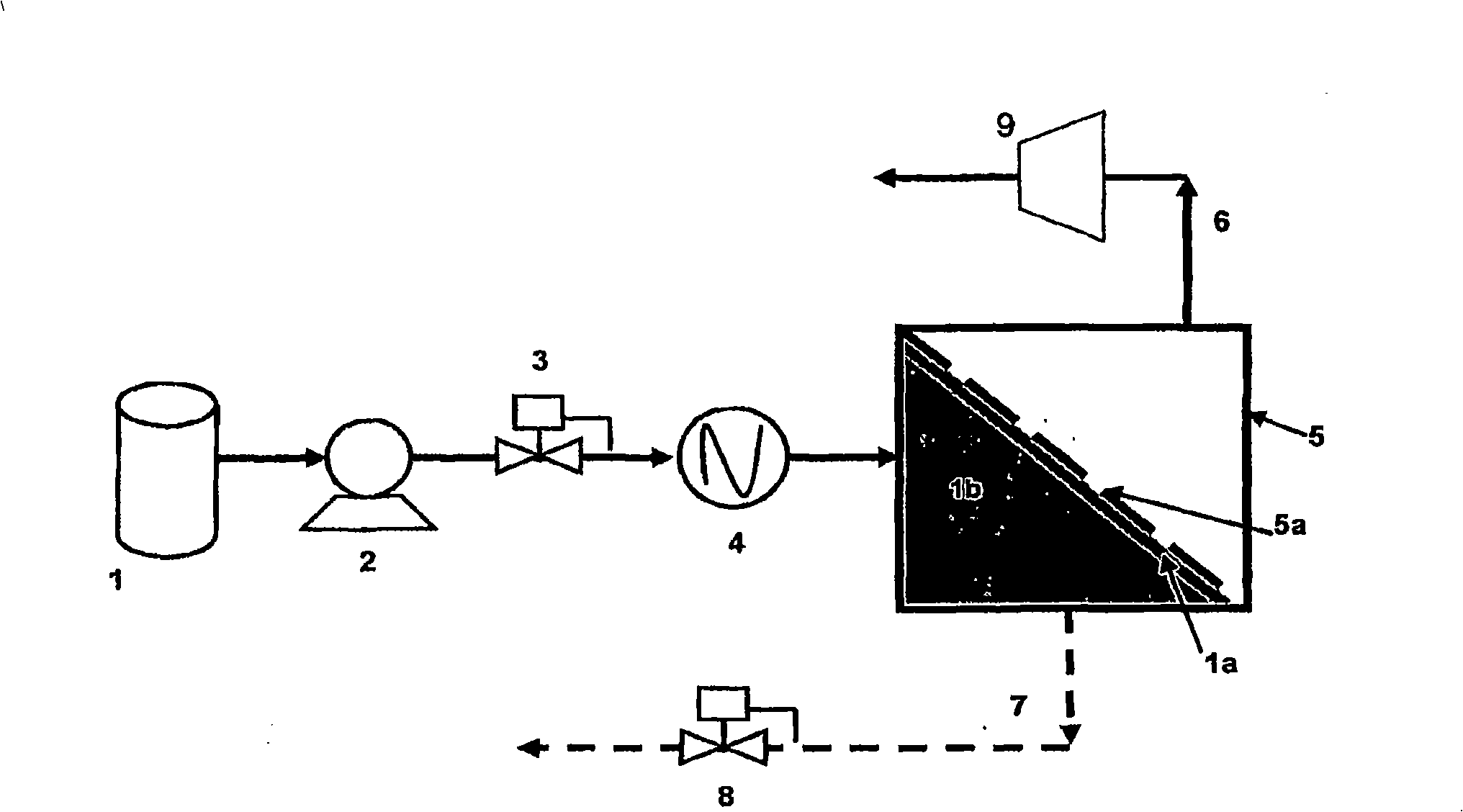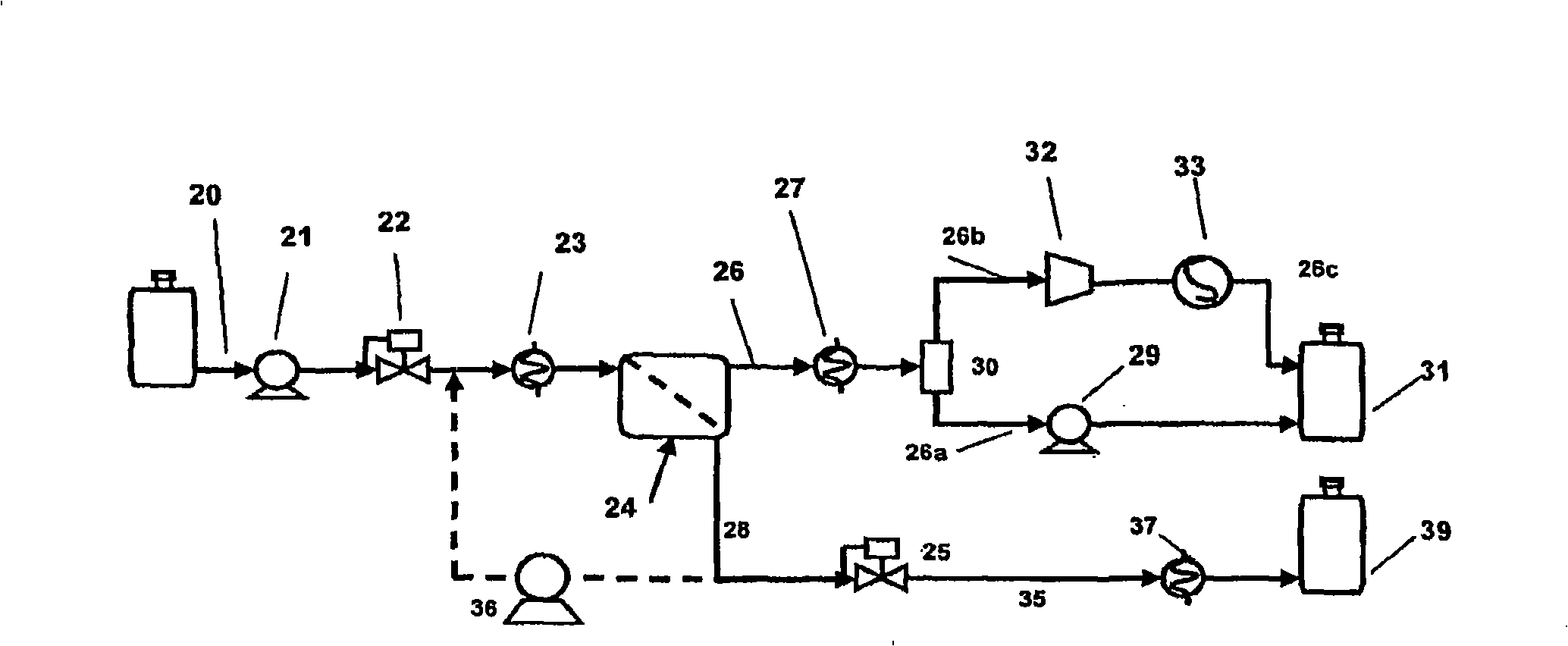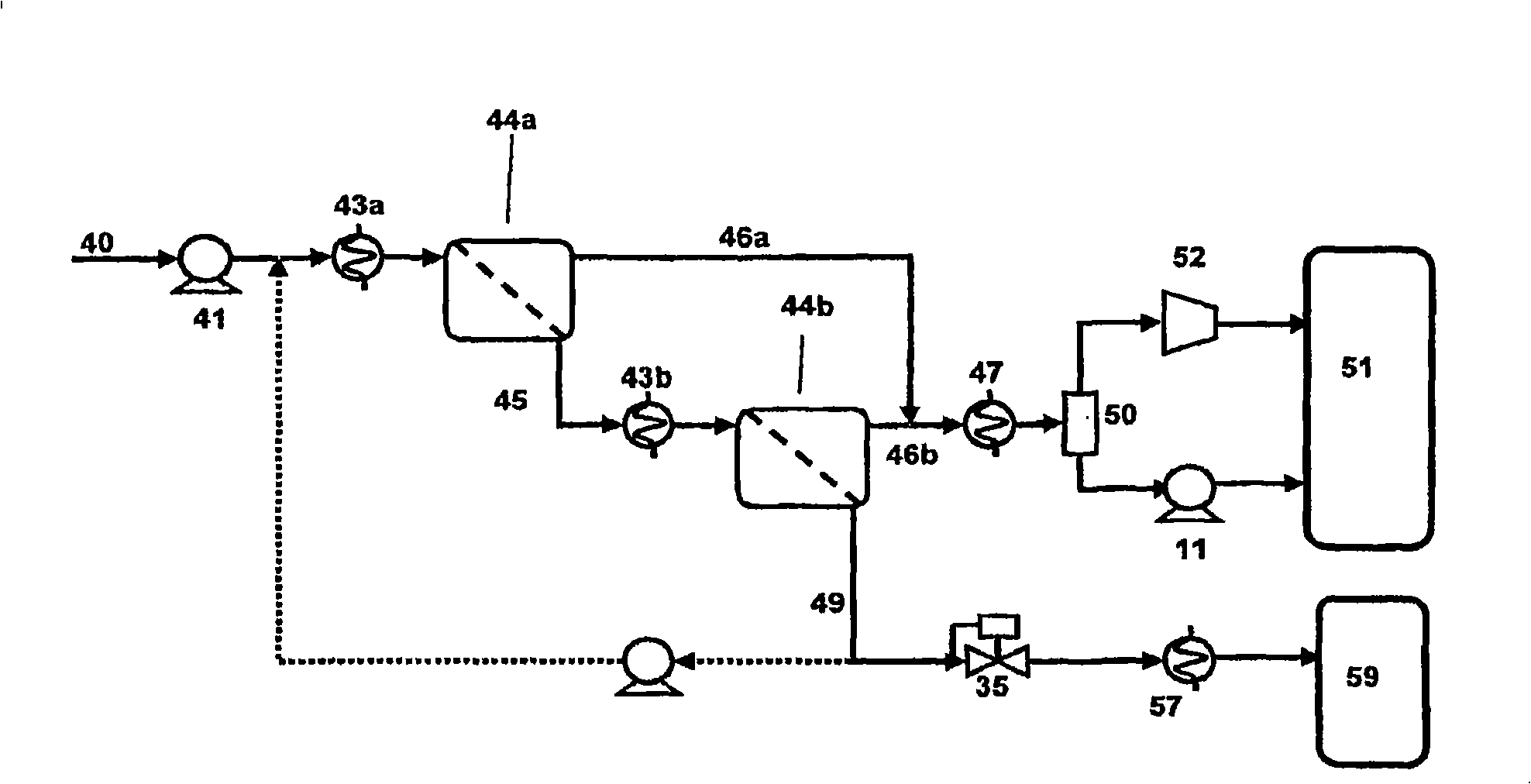Improved membrane separation process using mixed vapor-liquid feed
A raw material and raw material flow technology, applied in separation methods, semi-permeable membrane separation, purification/separation/stabilization of organic compounds, etc., can solve the problems of reducing the overall efficiency of the membrane system, reducing the selectivity of aromatic compounds, etc. Effect of Area Reduction, Selectivity Improvement, High Aromatics Permeate Yield
- Summary
- Abstract
- Description
- Claims
- Application Information
AI Technical Summary
Problems solved by technology
Method used
Image
Examples
Embodiment 1
Pervaporation film
[0022] Aromatics selective membranes of the type described in U.S. 5,670,052 are used to concentrate aromatics in gasoline in the permeate. The polyimide-polyadipate film used was crosslinked with diepoxycyclooctane (DECO). The polyimide hard segment contains pyromellitic dianhydride (PMDA) and 4,4'-methylenebis(2-chloroaniline) (MOCA). The soft segment polyadipate has a molecular weight of approximately 2000.
[0023] The PEI-DECO polymer was coated on a porous Gortex support at a thickness of 0.1 microns to a thickness of approximately 40 microns. The polymer film was protected with an additional 0.05 micron porous Gortex coating, thus forming a sandwich structure with a total film thickness of approximately 150 microns. Manufactured from the coated sheet with an active area of 0.9m per piece 2 spiral wound membrane elements and used for separations as described in Examples 3 and 4.
[0024] Note also the use of a plate-frame (cassette) module design...
Embodiment 2
[0025] figure 2 Simplified process schematic of the apparatus used in this example. The conventional gasoline feedstock (20) is pressurized with a pump (21) to obtain the desired feedstock pressure. The feed flow is controlled with a mass flow control valve (22). The feedstock is heated to the desired temperature by contact with a circulating hot glycol-water mixture in a heat exchanger (23), which is typically maintained at 120°C for this example. Alternatively, a silicone oil bath is used to heat the temperature of the gasoline feedstock up to about 160°C. The preheated feedstock is essentially a vapor when transferred to the membrane module (24). The back pressure of the membrane is controlled by operating the retentate stream (28) through a pressure regulator (25) to provide the desired operating pressure P f . Permeate (26) is recovered under vacuum provided by vacuum pump (32). The permeate vapor is cooled to about 30°C using a heat exchanger (27). The "heavy" pe...
Embodiment 3
[0026] For this embodiment, polymer-coated bulk ceramics were constructed by the following method:
Poly(ethylene adipate) "PEA" and pyromellitic dianhydride "PMOA", 4,4'-methylenebis(2-chloroaniline) and 1,2,5,6-bis Epoxycyclooctane "DECO" and an equal amount of DMF were mixed with acetone to form an approximately 2.0% by weight polymer solution. The final molar ratio of the components was 1-PEA2000 / 2-PMDA / 1-MOCA / 2-DECO. The solution was kept at room temperature or below room temperature after addition of DECO. This solution is used to coat porous ceramic blocks by dipping a liquid polymer into the porous surfaces of the blocks. The coated block will thus form a polymer film of the composition described in US Pat. m 2 .
[0027] film for figure 2 In the simplified procedure and setup described in . Conventional gasoline containing Japanese regular unleaded winter grade gasoline was used as feedstock (21). The raw gasoline was tested to determine its octane number and...
PUM
| Property | Measurement | Unit |
|---|---|---|
| boiling point | aaaaa | aaaaa |
| thickness | aaaaa | aaaaa |
| surface area | aaaaa | aaaaa |
Abstract
Description
Claims
Application Information
 Login to View More
Login to View More - R&D
- Intellectual Property
- Life Sciences
- Materials
- Tech Scout
- Unparalleled Data Quality
- Higher Quality Content
- 60% Fewer Hallucinations
Browse by: Latest US Patents, China's latest patents, Technical Efficacy Thesaurus, Application Domain, Technology Topic, Popular Technical Reports.
© 2025 PatSnap. All rights reserved.Legal|Privacy policy|Modern Slavery Act Transparency Statement|Sitemap|About US| Contact US: help@patsnap.com



